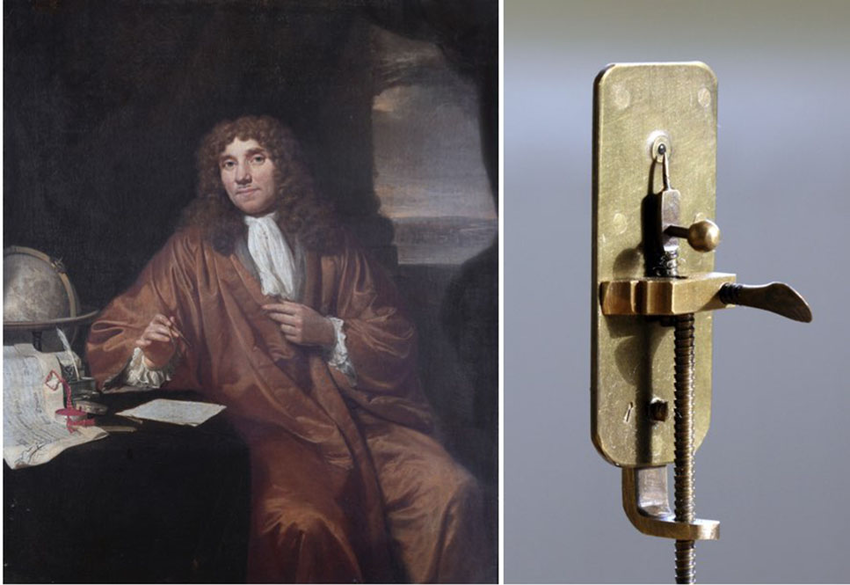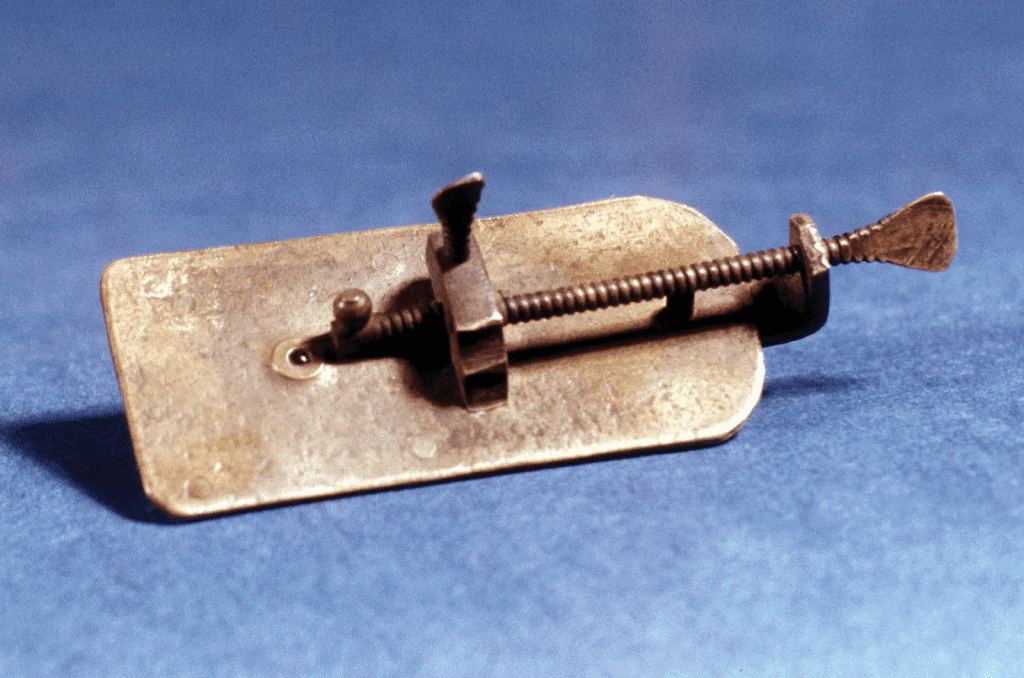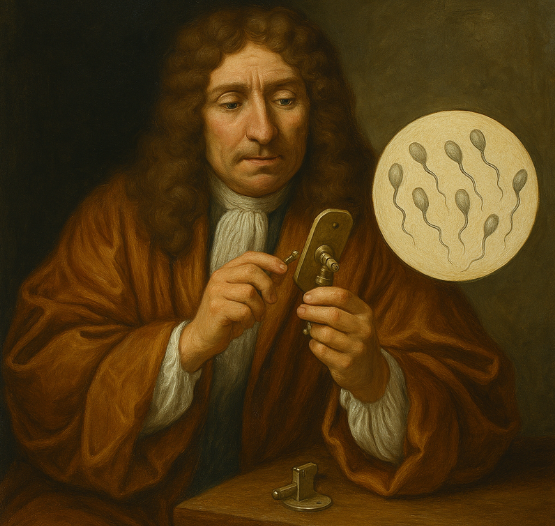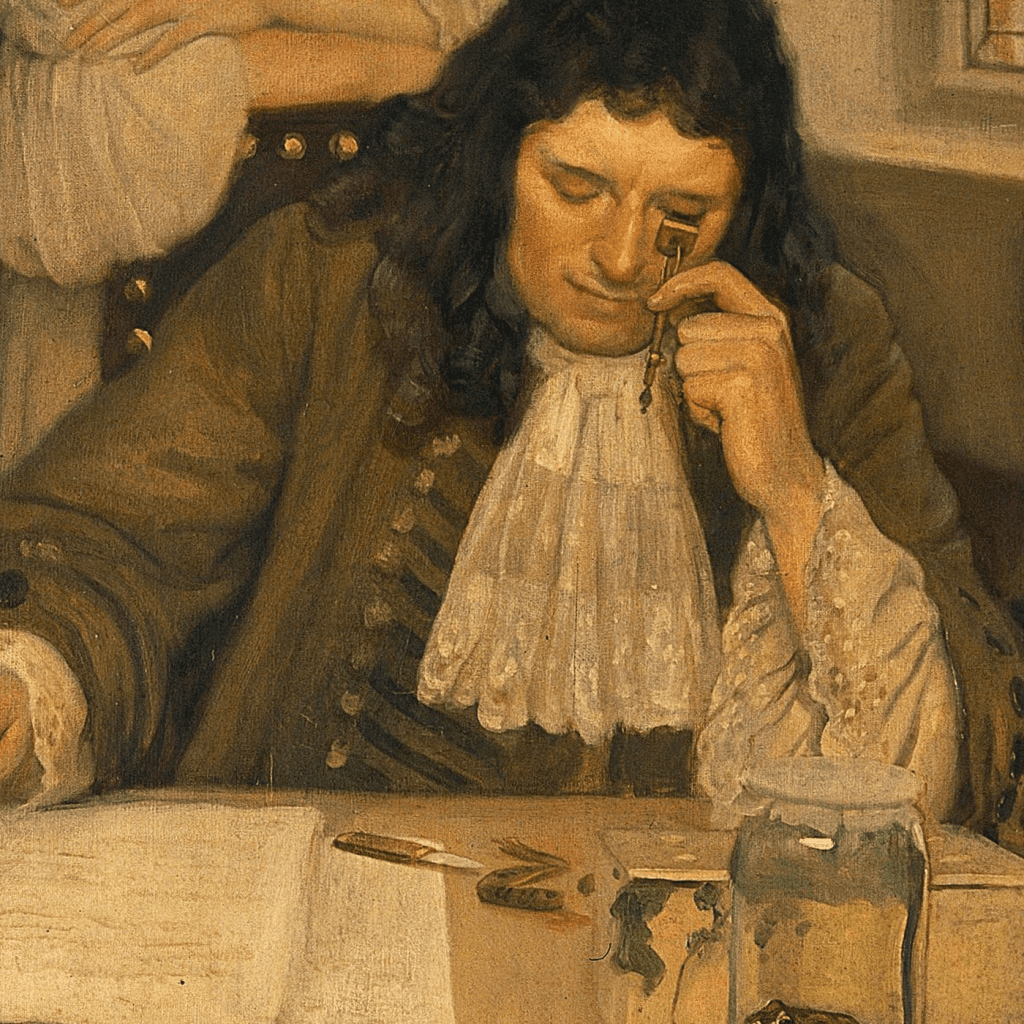In the 17th century, when science was still defining its boundaries, one man’s relentless curiosity forever changed how we understand the world. Antonie van Leeuwenhoek was not a scholar, not a university professor, and certainly not a trained scientist by today’s standards. He was a Dutch draper with a fascination for lenses, and that obsession would lead him to become the father of microbiology.
Long before modern laboratories or sterile glass slides, Leeuwenhoek was peering into a hidden universe using tools he built with his own hands. In 1677, he made one of his most unusual and groundbreaking observations: the first known human to witness sperm cells under a microscope.

The Homemade Microscope That Opened a New World
Unlike many of his scientific peers who followed academic paths, Leeuwenhoek’s knowledge came through hands-on experimentation. He worked as a fabric merchant in Delft, Netherlands, where he used magnifying lenses to inspect cloth quality. But what began as a trade skill soon became a personal passion.

He crafted his own microscopes using small glass spheres mounted between metal plates. These simple yet powerful devices could magnify objects up to 300 times, far beyond anything available at the time. With no formal scientific background, Leeuwenhoek was driven purely by wonder.
He began examining everything he could get his hands on from rainwater and plaque scraped from his teeth to insect wings and plant tissues. What he found stunned him. Teeming lifeforms, invisible to the naked eye, revealed themselves through his lens. He called them “animalcules,” a term he used for the tiny creatures swimming, squirming, and crawling in seemingly lifeless water.
Video:
The Gadget That Changed How We See The World | Cell | BBC Earth Science
The Bold Observation That Turned Heads in 1677
Among his most shocking discoveries came in 1677 when Leeuwenhoek observed his own semen under the microscope. What he saw were tiny, wriggling shapes that looked, to him, like miniature humans. He believed these sperm cells contained fully formed little people homunculi just waiting to grow inside the womb. Although his interpretation of how reproduction worked was incorrect, the observation itself was revolutionary.
He shared his findings with the Royal Society in London, where his work was met with both amazement and skepticism. Some thought his claims were absurd, while others were intrigued by the possibility of an entire world that had remained hidden until now.
Eventually, his detailed drawings and careful documentation won the scientific community over. Leeuwenhoek’s discovery marked the beginning of a deeper understanding of reproduction and cellular biology, even if his early theories were flawed.

Changing Science One Lens at a Time
Leeuwenhoek’s achievements went far beyond sperm cells. He was the first to document red blood cells, observe bacteria, and describe muscle fibers and protozoa. He kept detailed notes and sketches, submitting them regularly to the Royal Society, often with vivid descriptions of what he had seen.
Video:
Leeuwenhoek and Microscopic Life | AMS OpenMind
His methods were so meticulous and unique that no one else could replicate his results for years. He guarded his lens-making secrets closely, which frustrated many scientists but also elevated his reputation as a lone genius.
Despite lacking a formal education, he was eventually recognized as a scientific pioneer. His discoveries laid the foundation for the fields of microbiology, cell theory, and even immunology.
Legacy of a Curious Mind
Antonie van Leeuwenhoek never saw himself as a scientist in the modern sense. He didn’t publish textbooks or hold academic titles. Yet his name is now etched into the annals of science as one of the greatest observers of the microscopic world.
His story reminds us that curiosity can be just as powerful as education. With a few lenses, steady hands, and an insatiable desire to see more, Leeuwenhoek unveiled a hidden world that would shape medicine, biology, and technology for centuries.

Conclusion: A Glimpse That Transformed Science
In a time when the limits of human knowledge were still being drawn, Antonie van Leeuwenhoek pushed the boundary by simply looking closer. His decision to observe the unseen led to discoveries that would ripple across generations.
Even though he misunderstood the exact role of sperm cells, his groundbreaking observation was a turning point. More importantly, it was his willingness to explore the unknown that sparked a revolution in science.
Today, the legacy of Leeuwenhoek lives on in every microscope, every biology lab, and every student peering through a lens to discover what lies beyond the visible.


